Los Glaciares National Park: your ultimate guide in 2024
The name of the Los Glaciares National Park in Argentinian Patagonia literally means “the glaciers”. I guess that gives you quite an idea of what you can find in the park!
But it’s not only glaciers there, though.
There are countless hiking opportunities; incredible lakes, including lago Argentino – the biggest lake in Argentina; Patagonian steppe and forests; the South Patagonian ice cap, which is the second biggest extrapolar ice field in the world… the list could just go on.
If you want to visit this incredible national park which is included in the UNESCO World Heritage list, our article will definitely help you plan your trip.
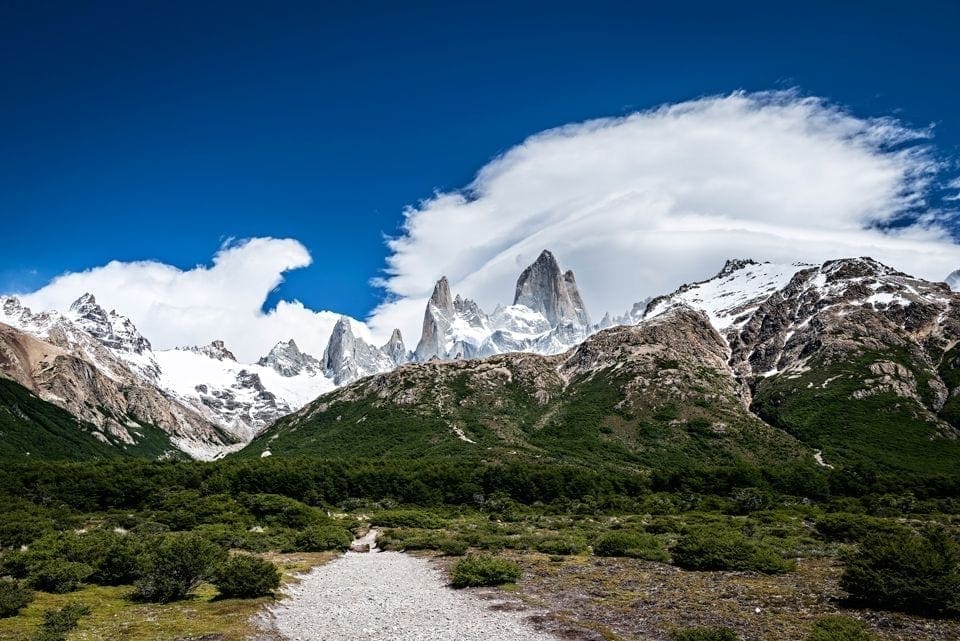
Los Glaciares national park facts
Location: Argentinian Patagonia. South of Argentina, Santa Cruz province
Time zone: GMT -3
Currency: Argentine Peso
Language: Spanish
Outlets: types C and L, which means 2 (like in Europe) or 3 round pins. 220V voltage.
Visa requirements: VisaGuide has a nice comprehensive list of visa-exempt countries. All EU citizens, UK and USA passport holders can visit Argentina for up to 90 days without a visa.
How to get to and around Los Glaciares?
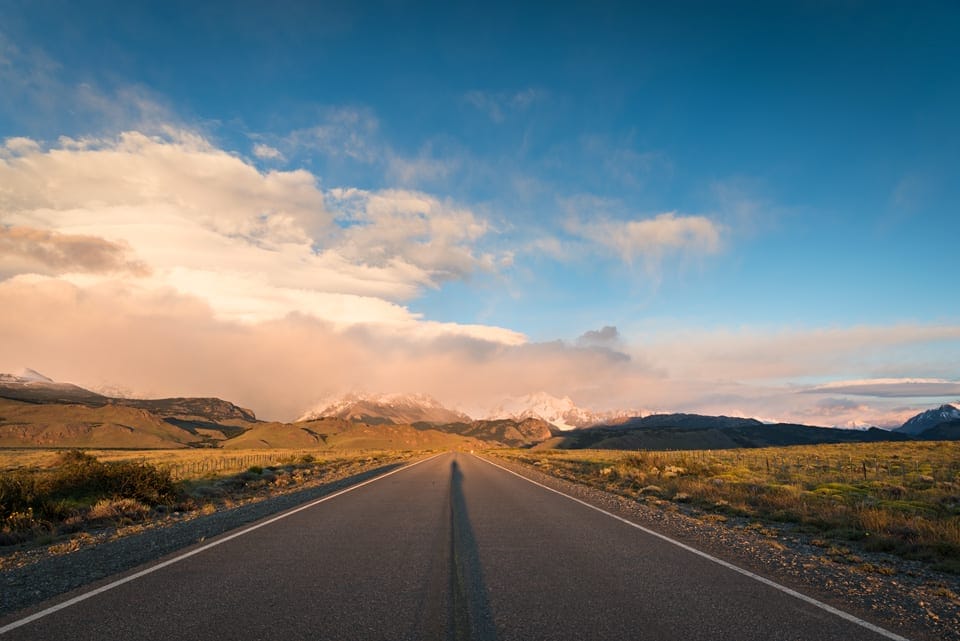
There are many ways of getting to Los Glaciares national park. Depending on where you’re coming from, it might be more convenient to go by car, bus, plane, or a combination of those.
Flying
There’s an international airport in El Calafate that has several daily flights from Buenos Aires operated by Aerolineas Argentinas and LATAM (both similarly priced and generally more expensive than the low-cost airlines flying to Punta Arenas).
Word of caution – most of these flights operate to the domestic airport Aeroparque Jorge Newbery in Buenos Aires, while the international flights arrive at Ezeiza airport. In case you’re transferring in Buenos Aires, take this into consideration.
There are daily flights available from Bariloche and Ushuaia.
There are no direct flights from Santiago in Chile (or anywhere else in Chile for that matter) to El Calafate, so you have to either fly to Punta Arenas or Puerto Natales and continue with a bus or a rental car or fly to Buenos Aires and transfer there for a flight to El Calafate.
Taking a bus
Buses are quite a popular way of getting around Patagonia.
There are both public buses and tour buses that can take you from one place to another. Pricewise they might work out cheaper than renting a car, but timewise it’s definitely longer, and it can take anywhere from 3 hours to 24 and more depending on where in Patagonia you are.
From Puerto Natales – Turismo Zhaaj and Cootra are two of the companies that run buses to El Calafate. The journey lasts approximately 5 hours, but it can be longer if there are lines at the border or if something else goes wrong.
From El Calafate to El Chalten – Caltur and Chaltén run buses every day between November and March. The journey lasts approximately 3h and you get to enjoy some fancy views, like Mount Fitz Roy in its full glory.
From Tierra del Fuego National Park, Bariloche, Buenos Aires etc. – my suggestion would be to just travel by plane, as the journey on a bus is so inconveniently long that it just doesn’t make sense (it can take even 2 days if you travel from Bariloche). The plane tickets are quite cheap and there are daily flights (or even 3 a day) available.,
Driving
When we spent 10 days in Patagonia, we drove our rental car from Torres del Paine National Park.
In my humble opinion, it’s just really convenient to drive around Patagonia, especially if you plan to visit just Torres del Paine and Los Glaciares as we did. Of course, if most of your Patagonia trip consists of multi-day treks, price-wise it would make less sense to rent a car.
Anyways, if you’d like to rent a car near Los Glaciares and drive by yourself, check out car rentals in El Calafate. Theoretically, there are some available in El Chalten as well, but they are more expensive (as they still deliver the car from El Calafate).
If you’d like to rent in Chile and then travel to Los Glaciares, know that Punta Arenas have better and cheaper car rentals than Puerto Natales.
If you’d like to learn more about renting a car and driving in Patagonia, check out our guide with everything you need to know.
Driving from Puerto Natales or Punta Arenas in Chile to Los Glaciares
It takes approximately 7-8 hours to get from Punta Arenas to El Calafate. It takes 3-4 hours (plus the border crossing) from Puerto Natales. The road is nice and paved, so it’s not really a problem.
Driving from El Calafate to El Chalten
The road is quite good as well, and it takes approximately 3 hours to drive between the towns. Beware of the wind and of the trucks driving in opposite directions!
Driving from Tierra del Fuego National Park, Bariloche, Buenos Aires etc.
Unless you have ample amounts of time, it doesn’t make too much sense to drive from these places to Los Glaciares, as it would take 11+ hours from Tierra del Fuego and more than a day from the other mentioned places. It’s just easier to fly and then rent a car. Plus, driving would make your journey a hella more expensive, as you’d use a lot of extra fuel or you’d have to pay the rental car dropoff-in-another-area fee.
How to access the entrances to parque nacional Los Glaciares?
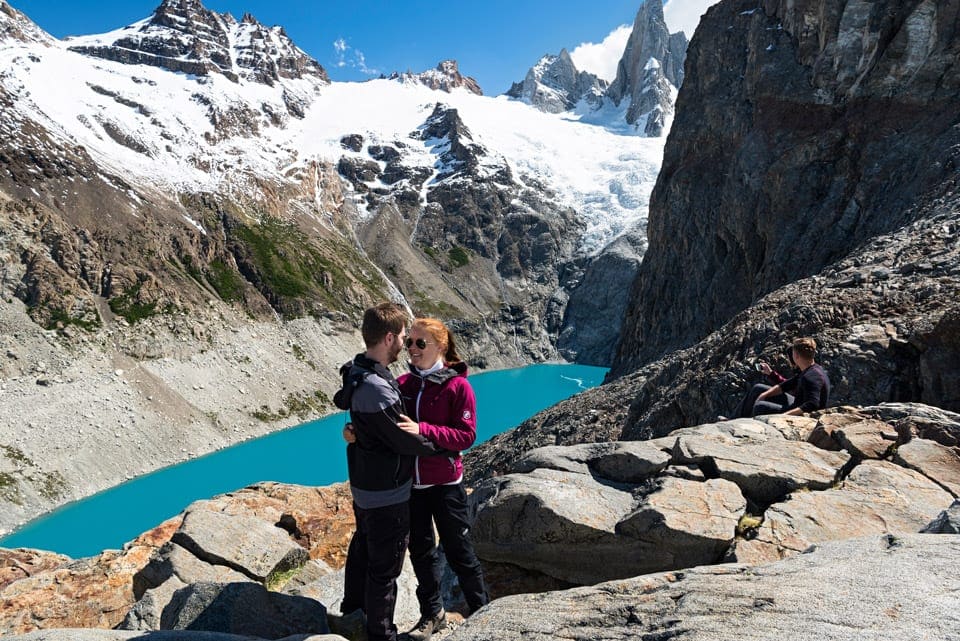
As with Torres del Paine, it’s quite a pain to find the access points to the Los Glaciares national park. Even the official website of the park doesn’t provide this pretty important information.
From what I could find, though, the main entrances to the park are: the one leading to Perito Moreno called Rio Mitre; Puerto de Punta Bandera (Port of Punta Bandera); El Chalten; Helsingfors; and an entrance close to Lago Roca.
The only paid entrances to Los Glaciares are the ones on the way to Perito Moreno – Río Mitre, and the Puerto de Punta Bandera. There you must pay the entrance fee to the Administración de Parques Nacionales (APN).
Getting to the Perito Moreno entrance to Los Glaciares National Park
The Rio Mitre entrance is the one, obviously, which you use to visit Perito Moreno and the tours on and near it. This is the most popular area of the whole park.
Perito Moreno entrance is located approximately 80km from El Calafate on road RP11.
It can be accessed by a car, bus, remis (similar to a taxi) and by going on a tour.
Getting to the Puerto de Punta Bandera entrance to Los Glaciares National Park
Puerto de Punta Bandera gate is located 47km from El Calafate and can be accessed on roads RP11 and RP8.
This entrance is mostly used by those people who take different tours to visit the glaciers Upsala, Spegazzini, Heim, Seco, Mayo and others and to navigate the Lago Argentino.
Getting to the El Chalten entrance – the North sector of the park
The little town El Chalten is known as the hiker’s paradise and for a good reason. There are countless hiking trails to enjoy here for everyone, be they a beginner or an advanced hiker. Honestly, some of the best hikes in Patagonia are there.
The town is located 220km north of El Calafate. You can get to El Chalten by car, by bus, or by joining a guided tour in El Calafate.
The drive is on roads RP11, RN40 and RP41, which are all paved, and it takes approximately 3h with a car.
The entrance to the park in El Chalten is still free.
Getting to the Roca lake entrance
Roca lake entrance is located approximately 50km Southwest of El Calafate.
It can be reached by driving on the RP11 road (pavement) in the direction of the Perito Moreno glacier and then turning left on the RP60 road (gravel) until connecting with the road RP15, or by always travelling on the road RP15 (all gravel).
The road RP15 allows you to observe many typical Patagonian ranches, so it might be worth the struggle of driving on gravel. There are some campgrounds in this sector and a limited amount of hiking opportunities.
This entrance can be accessed by car, remis and guided tours. In the summer, though, there are regular buses as well.
Getting to the entrances to the central sector of the Los Glaciares National Park
There are two entrances by which you can access the central sector of the Los Glaciares – the entrance to the Moyano section of the park near the Helsingors village, and an entrance to the Guanaco section.
The central area is quite isolated and the roads to it are quite bad. If you do plan to go there, keep in mind that you need to be well prepared for every single thing that could go wrong as the response times of the emergency services are long.
The central sector is accessible only in the summer and only by driving yourself.
When visiting the Central sector of Los Glaciares, keep in mind the times it would take you to get back to your base (which is most probably in El Chalten or El Calafate).
Helsingfors entrance (Moyano section)
Approximately 3h drive (180km) from El Calafate, near the hosteria Helsingfors on Google Maps. You can reach this entrance by driving on roads RP11, RN40 and RP21 (gravel roads).
Entrance to the Guanaco section
Approximately 3h drive (155km) from El Calafate, located close to Puesto Rio Guanaco on Google maps. You can reach it by driving on roads RP11, RN40 and RP69 (gravel roads).
How much does it cost to enter Los Glaciares?
The entrance fee to the Los Glaciares National Park is 1800 Argentine pesos (~15 euros), as shown on the official government website of Argentina. If you’d like to visit the park two days in a row, you can get the second ticket with a 50% discount, thus paying 2700 pesos instead of 3600.
You can buy the ticket, as mentioned, at the Rio Mitre entrance or at the Punta Bandera port, as well as online.
At the gates, the fee can be paid by cash, with a credit card (Visa/Mastercard) or a debit card (Electron).
My advice, though, is to have cash with you – you wouldn’t want to be turned away from the entrance after driving 1,5 hours from El Calafate because the cash machine is not working, right?
When is the best time to visit Los Glaciares?
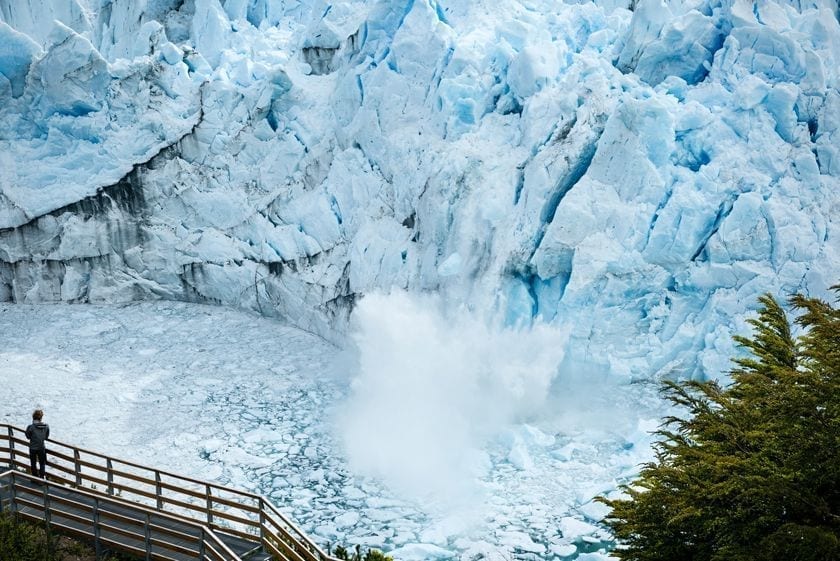
Just as with Torres del Paine national park and the rest of Patagonia, it’s hard to tell exactly when the best time is to visit Los Glaciares. The most popular, though, is definitely around the summer season, which lasts approximately from November until March.
In the summer, the mean temperature in summer is 13,4 degrees Celsius and in the winter – 0,6 degrees Celsius.
Since summer is the high season, everything is open – hotels, restaurants, activities. But the crowds usually scare away some animals that might be seen during the shoulder/low seasons.
Most of the activities, like hiking, kayaking, etc., are easier done in summer, as the weather is warmer and there are more daylight hours.
Winter is the off-season in the whole of Patagonia. It lasts from June to early September, which means that select accommodation is closed and activities might not be possible. The weather is cold and snowy, but the winds are milder. In winter, though, there are snowstorms possible.
At the end of the season, like autumn which lasts from late March until May, the services are getting reduced, so, if you wish to go in Autumn, make sure to check what’s available.
What accommodation is there in Los Glaciares?
If you’re looking for hotels near Los Glaciares national park, the most popular places to stay would be El Calafate and El Chalten. But, if you’re looking for real wilderness and camping options, check out the central sector as well – there are very few options, but they might prove to be quite interesting.
Accommodation in the Central sector of Los Glaciares
There are some ranches available near the central sector or Roca lake as well, so if you’d like to check out the real Patagonian ranch life, definitely look into those. Plus, there is an organized camp (Camping Lago Roca) and a free one (El Huala) in Lago Roca.
There is a hosteria and estancia near the Helsingfors village.
Accommodation in El Calafate
There is every single type of accommodation available in El Calafate that you can imagine: from hostels, apartments, and bungalows to five-star spa hotels.
If you’d like something more glamorous and secluded, look a bit outside of the town where you’ll find luxury lodges and hotels with the best views.
For something more mid-range, there are a lot of boutique hotels, apartments, B&Bs and similar in El Calafate. They tend to be located just off the centre of the town.
If you’re looking for something very budget, the main avenue of El Calafate hosts a range of hostels.
Accommodation in El Chalten
Just like El Calafate, you can find accommodation for every taste and budget in El Chalten. Although you should keep in mind that during the peak of the summer season the accommodation will get booked out, as many people are going for the abundance of hiking that Los Glaciares near El Chalten offers.
If you’d like to have a bit more privacy and live closer to nature, check just outside of the limits of the town for some wilderness lodges and estancias.
Otherwise, there are both hostels and B&Bs, as well as midrange hotels right next to the main street of the town.
Farther into the park there are campsites available as well, if you’d like to, for example, enjoy sunset or sunrise by Laguna de los Tres. There are free camping areas located by the trails – De Agostini, Laguna Capri, Poincenot, Río Blanco, Toro.
And just so you know, at whatever kind of accommodation you stay in, the staff will most probably be happy to help you with any tips that you need regarding hiking. They can even arrange a transfer (with a surcharge) to take you to the trailheads.
What food is there available in Los Glaciares?
There are plenty of food options available in El Calafate and El Chalten. Both towns have supermarkets and a rich selection of restaurants – both traditional and international.
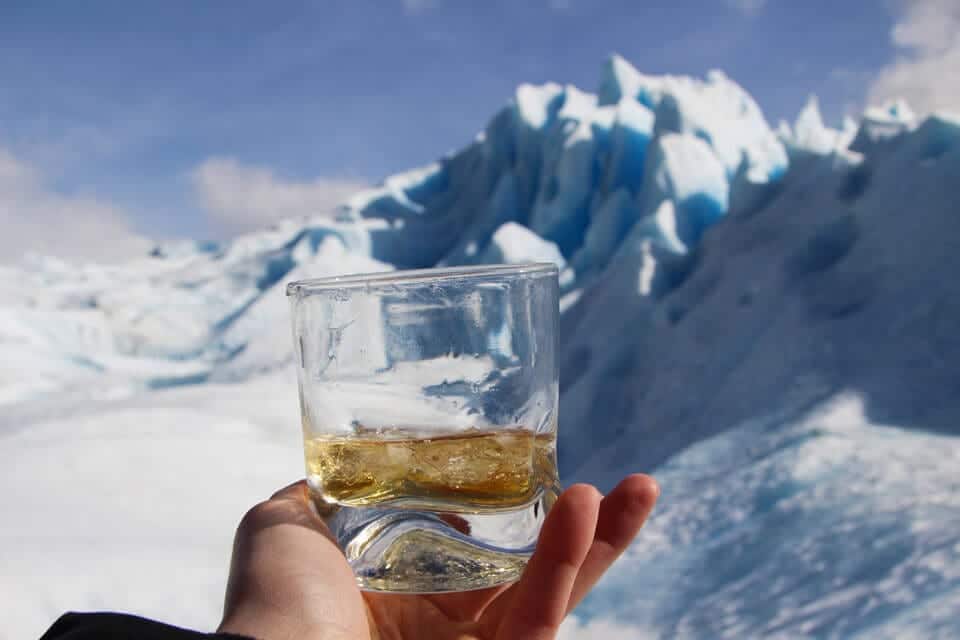
El Calafate and Perito Moreno Glacier
There is a restaurant/café available right in front of the Perito Moreno glacier, which serves some quick snacks and some warm meals. Don’t expect anything really fancy, but it is still nice to have a chance to eat and not have to bring everything with you. Plus, you can enjoy a drink with a view of the famous Perito Moreno glacier!
Otherwise, El Calafate is quite a big town, so there are some supermarkets available and plenty of restaurants and cafes. We enjoyed La Tablita for some great Argentinian parilla (grilled meat) and La Zaina.
El Chalten
The supermarket in El Chalten has a smaller choice of items available (although still pretty good) and the prices are a bit higher.
Most of the restaurants there are concentrated along the main avenue – Av. San Martin. We recommend La Cerveceria Chalten with its own microbrewery – a hearty meal and artisanal beer are exactly what you need after a whole day of hiking. The place is popular and gets damn busy in the evenings.
What animals are there in Los Glaciares?
Most of Los Glaciares is covered in ice, obviously, since there are 47 major glaciers and about 190 smaller glaciers there. But there is a semiarid Patagonian steppe in the park as well, which is created by the mountains holding back most of the humidity from the Pacific Ocean, and Magellanic subpolar forests composed of lengas, guindos, and ñires.
There are more than 100 species of birds living in the national park Los Glaciares. Some of those include the emblematic Andean Condor and Darwin’s Rhea, sometimes called the “South American Ostrich” and locally known as Choique. Some others are white-throated caracara, yellow-bridled and black-throated finch. In the north, if you’re lucky, you might get to see a black-chested buzzard eagle. The rivers Fitz Roy and Río de las Vueltas serve as a habitat for the torrent duck.
Animals in Los Glaciares are similar to those that you can see in Torres del Paine as well. Some of the most interesting and less visible in the park include the elusive Huemul deer, puma, and Andean cat. There have been sightings of the grey and red fox as well.
Among the animals, the most visible are the guanacos. The population has decreased when compared to some time ago, though, because of domestic and feral livestock, forest fires and alien invasive species.
What to do in Los Glaciares national park?
Since the name of this national park literally means “the glaciers” in English, then the answer is obvious, right? Look at and trek on glaciers is what you’re supposed to do there.
Obviously, if you go to Los Glaciares, you can’t leave without hiking at least one of the glaciers. Perito Moreno is the obvious choice since it’s the most famous one. But there are other glaciers, such as Cagliero, Viedma or Upsala glacier. Or maybe the Spegazzini one, the highest in Los Glaciares, or maybe Secco – the dry one, which is retreating… so many choices!
Don’t feel like hiking the glaciers? Enjoy the views near it with a navigacion – a boat trip that takes you close to the glaciers, or kayak to them!
Don’t like being on the water for extended periods of time? (I’ve been there, haha!) You can horse-ride all around the park.
But there are other things to do in Los Glaciares besides visiting glaciers. Let’s list some of them!
In the north, as I mentioned already, there are lots and lots of hiking trails from the lovely town of El Chalten. Some of the most notable are Laguna de los Tres, Cerro Torre and Laguna Torre. If you wish to do a shorter and easier hike, Mirador Los Condores and Las Aguilas are there for you. Plus, it’s possible to go climbing on some of the incredible peaks, including Mt Fitz Roy itself!
Then there are the incredible lakes that Los Glaciares offer. Lake Argentino is the biggest lake in Argentina. Both Perito Moreno and Upsala glaciers flow into it, so it’s a gateway to some of Patagonia’s most impressive glacial landscapes.
Or Lake Viedma, situated on the way to El Chalten. It shows up after kilometres of steppe when you’re driving from El Calafate. It offers that picture-perfect landscape – mountains, a bright blue lake, and a glacier flowing into it. And then there’s lago del Desierto, Lago Roca…
Another thing to do – you can visit an estancia near El Calafate, El Chalten, or in the southern sector of the park. Learn more about the Patagonian gaucho and their way of life by actually staying a night or two on the Patagonian farm.
In conclusion about Los Glaciares National Park
Los Glaciares is so beautiful it was declared a UNESCO World Heritage site. Besides, there are loads of things to see and do in and near the park!
In case you’re thinking if it’s worth visiting Los Glaciares, my reply would be – definitely! It really is an incredibly beautiful place.
What would be your favourite thing to do in Los Glaciares?
Like this post? Share it!
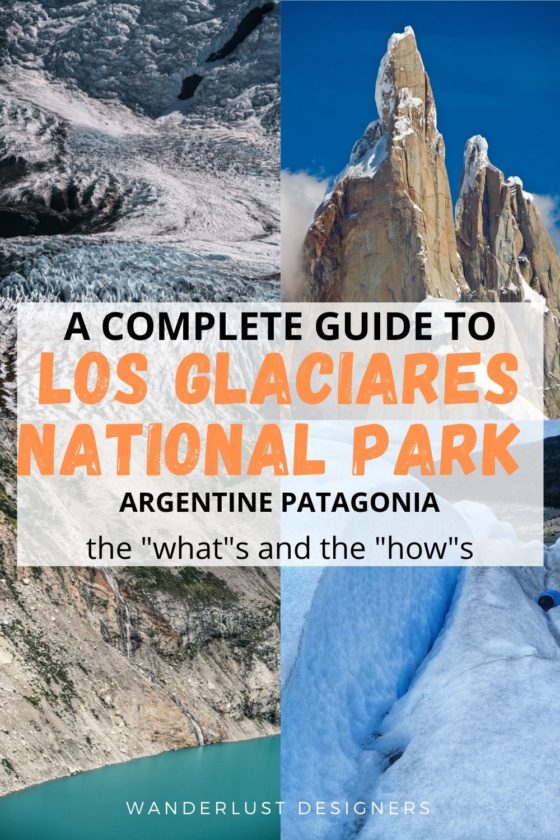
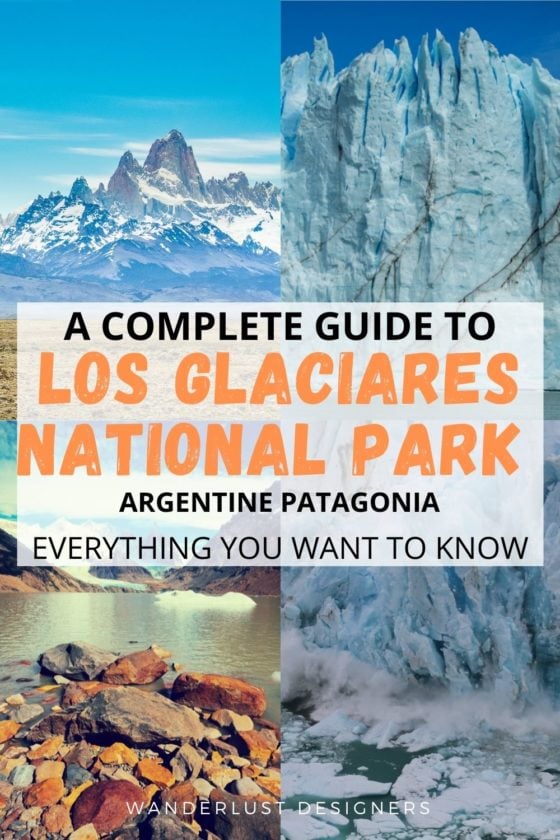





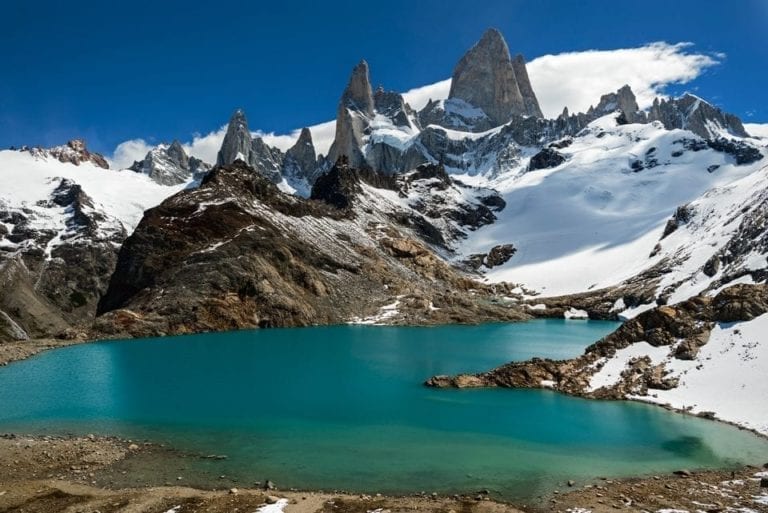

I was curious if you ever thought of changing the layout of your site?
Its very well written; I love what youve got to say.
But maybe you could a little more in the way of content so people could connect with it better.
Youve got an awful lot of text for only having 1 or two
images. Maybe you could space it out better?
Hey,
Thank you for the suggestion! I usually put more pictures in my articles, as you can see if you check out some others. I try to use only relevant images, and this time I didn’t personally have enough and couldn’t find any that would fit the text 🙂
Kristine